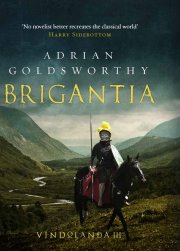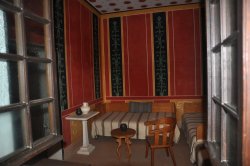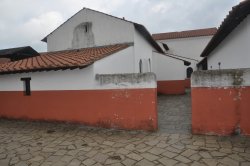

Roman Fiction
Ferox returns in:-
BRIGANTIA - (Vindolanda 3)

Brigantia rounds off the first trilogy of stories about Flavius Ferox and the fort at Vindolanda. It stands alone as a story, although it will certainly help if you have read Vindolanda and The Encircling Sea. As usual we begin in the north, with Ferox and Vindex chasing raiders. After that, we get to see more of the province of Britannia, as they head south to Londinium and then across country to the west. Ferox is soon in trouble, and all sorts of people are trying to kill him, so very much business as usual.

One of the ideas behind these stories has been to travel around Roman Britain and beyond. In the second story we got into the Highlands, Western Isles and to Hibernia/Ireland, and this time we see the settled lands of the south and the mysterious island of Mona (Anglesey). I have done my best to give a different flavour to Roman London compared to the forts and settlements of the frontier, for even by AD 100 it was probably the largest city in Roman Britain. Our knowledge of Londinium is patchy, since most lies under the heart of modern London, but it is steadily growing as rescue archaeology occurs before new building projects. A collection of writing tablets similar to the ones from Vindolanda was recently published and it is to be hoped that more will be found in due course. One of the surprises in these documents was the impression of just how quickly the city recovered after being sacked by Boudicca's warriors. Many mysteries remain about the city at the time of our story. The abandoned earlier fort described in the story has been found, and within a generation a permanent fort was built, but so far we have no idea where any soldiers lived while in Londinium c. AD 100. So I have the army using civilian buildings and old barracks, forming a military area/compound within the city, something that is known from the eastern provinces. The temples in the story all existed, judging from inscriptions, and were in the general areas described, even if we can rarely be precise.

If you ever have the chance, then a visit to the Museum of London is highly recommended, not least for their reconstructions of a series of rooms dating pretty much to the time of our story - https://www.museumoflondon.org.uk/museum-london/permanent-galleries/roman-london. They also produce the very handy Londinium. A new map and guide to Roman London which shows the traces of the Roman city overlaid on a modern map, so that you can trace its outline and see one or two remains as you walk around the streets. It is also possible to see remains of a Roman amphitheatre under the Guildhall - https://www.cityoflondon.gov.uk/things-to-do/visit-the-city/attractions/guildhall-galleries/Pages/londons-roman-amphitheatre.aspx. Like the stone fort, this was built a little later than our story, and in the book the action takes place in it wooden predecessor. For those wanting to see more of Roman London there is also the recently reopened Mithraeum under the Bloomberg space, although this does not figure in our story as it is much later in date - https://www.londonmithraeum.com

Our knowledge of life in the rest of Britannia continues to grow as new sites are located - last year's dry summer was a boon - and some excavated. Interpreting this evidence is not straightfoward, and in a novel you cannot simply say that we do not know. So I have done my best to present a picture of life in the towns and especially the countryside that fits with the evidence we have, although other reconstructions are equally possible. My suspicion is that there were considerable regional variations - the pattern of traditional farms and other buildings and more 'Roman' style structures does reflect known settlements in each area. What it meant to be Roman was not straightforward, and archaeologists no longer talk much of romanization as a simple process. Yet the occupation of Britain changed people's lives to some degree throughout the province, even in the rural areas. At the time of our story, the number of those in the south still able to remember a time before Rome was dwindling, but elsewhere conquest was still in living memory, especially in what would become Wales and the north of England.
The goddess Brigantia is something of a mystery, for she is only attested on inscriptions from the second and third centuries AD. She may have appeared - or even been deliberately created - under Roman rule and perhaps by the authorities, who were fond of personifications of ideas and groups. Then again, the cult may be older, however much it changed under Roman influence. One of the greatest problems in understanding the Roman empire is that we have almost nothing telling us what people in the provinces thought and felt about their own identity and the rule by Rome. So once again the depiction of the Brigantes, their politics and culture consists of the small number of facts, some guesses based on the evidence and a good deal of invention to make them seem real.
Introductory VIDEO to 'Brigantia'
BRIGANTIA - The inside jacket